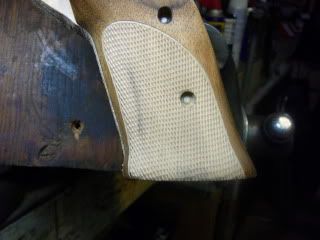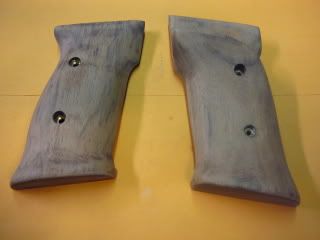slayer6769
Pilgrim
- Joined
- Feb 27, 2013
- Messages
- 4
- Reaction score
- 0
I accidentally dropped my frame on my replica 1860 Army in the hot soapy water i was cleaning my revolver in. I figured I'd just go with it at that point, so I finished cleaning everything. When I removed the frame from the hot soapy water, the finish was gone from my wood handgrips.
My question is, what's the best thing to refinish the wood with?? I was thinking linseed oil, but I figured I'd ask before doing anything else. Any help would be greatly appreciated.
My question is, what's the best thing to refinish the wood with?? I was thinking linseed oil, but I figured I'd ask before doing anything else. Any help would be greatly appreciated.






